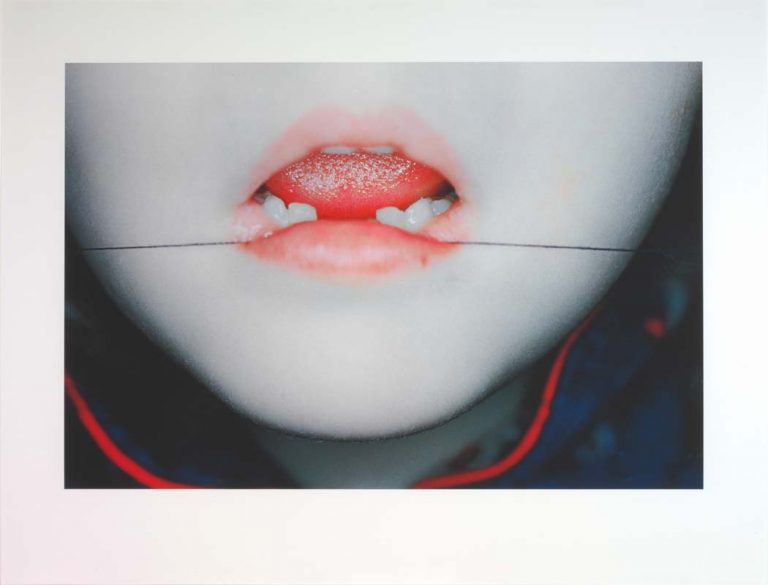We acknowledge the Traditional Owners of the land on which the Queensland Art Gallery | Gallery of Modern Art stands and recognise the creative contribution First Australians make to the art and culture of this country.

Anne Noble / New Zealand b.1954 / Ruby’s room no. 6 1999 / Digital colour print on Hahnemuhle rag paper, ed. 5/10 / 67 x 100.2cm / Purchased 2006 / Collection: Queensland Art Gallery | Gallery of Modern Art / © Anne Noble
Anne NobleRuby’s room no. 6 1999
Not Currently on Display
In her ‘Ruby’s room’ series Anne Noble has created closely cropped, unconventional portraits of her daughter Ruby, focusing on her mouth. The contrast between Ruby’s pale, luminous cheeks, her small open mouth and the almost toxic stains of colour in these images is both innocent and confronting, intimately revealing yet distant. This ongoing series, begun in 1998, is a personal record of the artist’s daughter through, she says, ‘close scrutiny of a site where life happens – the mouth. The mouth that speaks, tastes, smiles, reacts, learns, loves’.1 The photographs appeal to general ideas of play, intimacy and discovery.
Endnotes:
1. Justin Paton (ed.), Anne Kennedy and Lydia Wevers, Anne Noble: States of Grace [exhibition catalogue], Dunedin Public Art Gallery, Dunedin and Victoria University Press, Wellington, 2001, p.11.
New Zealand artist Anne Noble has been a practising photographer since the 1970s. Her varied subjects have included a London convent, the Antarctic wilderness, coastal landscapes of New Zealand, and her father’s body after death. Noble builds a picture through series of images, creating depth and intimacy in what she refers to as ‘essays’ of photographic images.
Anne Noble’s practice encourages viewers to spend time engaged in the act of looking. In recent years, she has turned her attention to the subject of the honey bee, a small creature symbolic of our world’s wellbeing. The artist’s interest in bees was sparked by keeping her own beehives at her home in New Zealand.